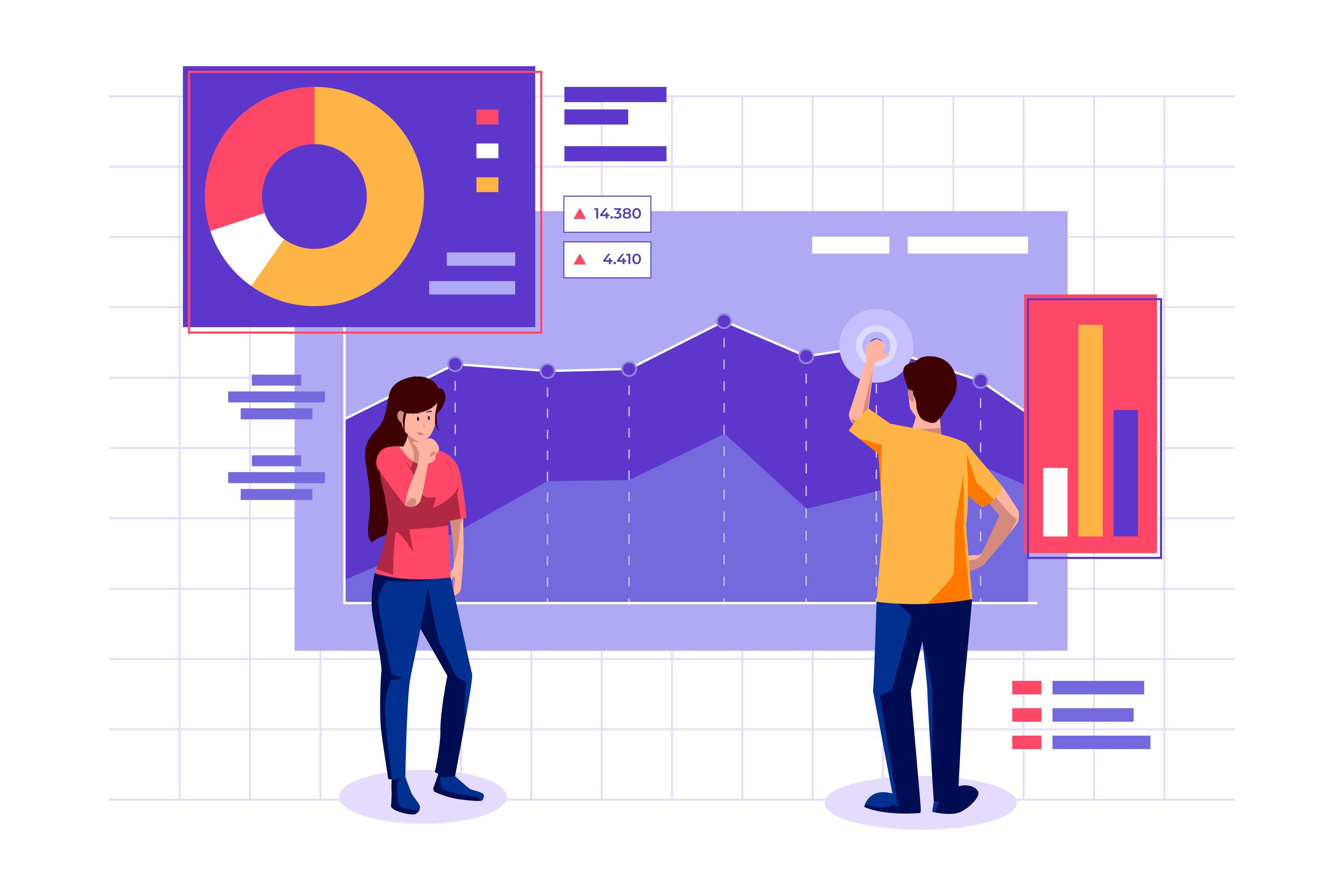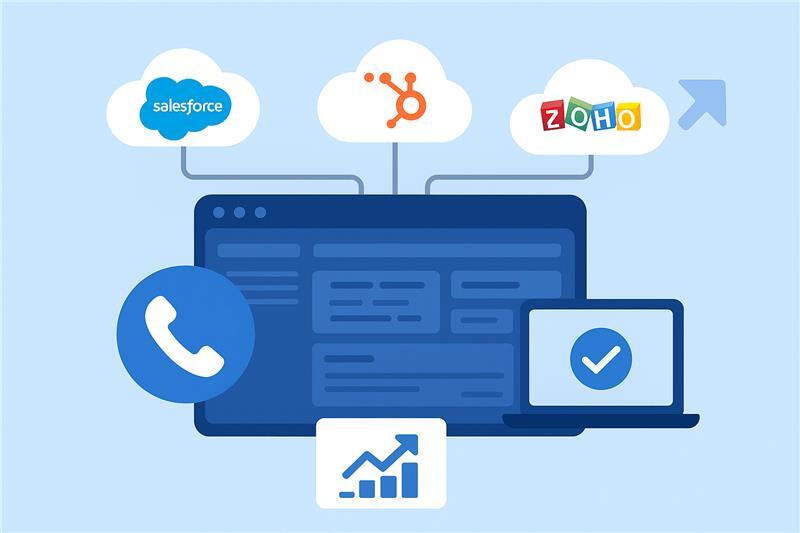
Sales Pipeline Analysis: Top 5 Metrics to Track
Sales organizations are the heart of many businesses across the world. It is essential for such organizations to visualize their sales efforts. Without proper visibility into your sales activities, it is challenging for you to form your next sales strategies. This is exactly where the concept of “Sales Pipeline” comes into the picture.
An organization’s sales pipeline is nothing but the visual representation of each buyer’s journey. Through a sales pipeline, businesses get an idea of how close a prospect is to completing a purchase.
The process of sales pipeline analysis is about evaluating why a particular contact succeeds or fails in the last set of activities before closing a sales deal. To perform the pipeline analysis successfully, you’ll need to analyze the key metrics with an effective CRM tool.
This blog will discuss how you can analyze a sales pipeline and pinpoint the top five metrics to track for greater insight into your sales pipeline.
So, let’s get started.

How can you analyze your Sales Pipeline?
Your sales pipeline represents every email, meeting, or call that may take place in a sales cycle. All these are tricks to close a sales deal. The purpose of sales pipeline analysis is to get insights into your pipeline and find out which prospects are ready to complete a purchase and which prospects need more persuasion.
In order to complete a sales pipeline analysis process efficiently and to gain a sales pipeline visualization, you need to track certain KPIs. In the next section of this article, we’ll explain these metrics in detail.
Top 5 Metrics to add to your Sales Pipeline Report
Are you wondering, how to evaluate the sales pipeline? Well, you need to understand the significance of each sales pipeline metric first. If you continue to track these metrics regularly, you’ll be able to generate an accurate sales pipeline report.
Below are the metrics to start with:
1. New Qualified Leads per Week
You should start your sales pipeline analysis by tracking this metric. It is impossible to close more sales deals if you don’t have qualified leads in your sales pipeline. By qualified leads, we mean the prospects who are ready to buy from you. These leads can help you achieve prompt conversion rates.
A robust sales pipeline is filled with new leads every week. By tracking this metric regularly, you can get visibility on the following aspects:
- How effective are your sales activities and initiatives are to generating new leads?
- Is your lead volume sufficient to fulfill the revenue goals?
- Are your sales reps compromising on the lead quality while focusing on lead quantity?
2. Conversion Rate per Stage
Another metric that determines the health of your sales pipeline is the conversion rate per stage. Since the sales cycle consists of many stages, it is important to identify the conversion rate in each stage. By tracking this metric regularly, you’ll get an idea of how well your sales pipeline is doing. In fact, this metric can also notify you of any upcoming potential shifts of customers in your current sales pipeline.
3. Sales Pipeline Velocity
This metric shows the amount of money that’s passing through your sales pipeline every day. The value of sales pipeline velocity depends on how fast the leads are getting converted through your sales pipeline. This metric is a critical one to understand how healthy a sales pipeline is. Also, you can find those leads that are taking a long time to get converted.
Calculating sales pipeline velocity is pretty easy. You can use the following formula:
%2525252520(1).png)
Let’s clear things out with an example. Suppose, you have 100 sales deals in your pipeline and the average size of the deals is = $2000. Say, your average sales cycle is 30 days long.
Then your sales pipeline velocity would be = [(100*2000)/30] = $6666.67
This means, every day, an amount worth $6666.67 passes through your sales pipeline.
Note that the higher the value of this metric, the better.
4. Overall Pipeline Value per Stage
Getting visibility over your overall sales pipeline value is important. This metric requires you to add up the total value of each deal in a particular stage. This overall value represents the total pipeline value of a sales pipeline.
Evidently, the higher the value of the overall sales pipeline, the better. Don’t forget to track this metric regularly since it offers major revenue generation opportunities. But, it is always better to maintain realistic expectations. All the sales deals won’t close on the same day.
That’s the very reason why you should calculate the value of this metric on a stage basis. You can break down your sales cycle into three stages, namely leads, opportunities, and the number of meetings booked.
As you move ahead in your sales pipeline, you’ll see that overall sales pipeline value is declining. But that’s normal. This also indicates that your prospects are getting closer to signing a business deal.
5. Sales Rep Pipeline Performance
It is also very important to track how each sales rep is performing and what their individual contributions are towards your overall sales pipeline. This metric tells you exactly that. Additionally, this metric also helps you identify if your sales reps require any individual assistance or motivation.
For example, suppose one of your sales reps is doing pretty well in terms of prospecting. This individual is bringing in new leads every day. However, a very lower percentage of these leads are getting converted. This clearly means that this particular rep requires training to improve their lead conversion skills.
The formula to estimate your sales rep pipeline performance is the same as the conversion rate per stage metric. Only here, you need to estimate for the sales reps, individually. This metric is essential to understand how well the reps perform individually and what support they require.
Sales Pipeline Analysis made Simpler with Salesken
Are you looking to gain real-time visibility into your sales pipeline? Your search should end with Salesken. We’ll help you to develop detailed insights over your sales pipeline throughout. Here’s how we can help you to:
- Identify which leads are at which stage of your sales pipeline
- Evaluate the performances of your sales reps
- Improve your awareness with post-call analytics as we help you measure critical metrics like win rate, sales conversion, estimated deal size, sales cycle length, and so on.
- Reduce your sales cycle length and build a profitable sales pipeline.
Book a demo with Salesken today!
Conclusion
Tracking the right sales pipeline metrics is essential for driving predictable revenue and optimizing your sales strategy. By closely monitoring metrics like conversion rates, sales velocity, pipeline coverage, deal age, and win rate, you gain valuable insights into what’s working and what needs improvement.
These data points not only help sales leaders make informed decisions but also empower teams to stay focused, prioritize better, and close more deals. In today’s competitive landscape, consistent pipeline analysis isn’t just a best practice it’s a growth necessity.
FAQs
What is a sales pipeline?
A sales pipeline is a step-by-step visual of the sales process, showing where each lead is in their journey toward becoming a customer. It helps teams track progress, forecast revenue, and manage deals effectively.
What is an example of a sales pipeline analysis?
An example of sales pipeline analysis is reviewing how many leads moved from the “Qualified” stage to the “Proposal” stage in a given month. If 50 leads were qualified and only 10 received proposals, the team might analyze why 40 didn’t advance—perhaps due to pricing concerns or poor lead quality. This helps identify bottlenecks and improve conversion rates at each stage.
How to analyze a sales pipeline?
To analyze a sales pipeline, start by reviewing key metrics like conversion rates, deal age, sales velocity, and win rates at each stage. Identify where deals are stalling or dropping off, assess the quality and volume of leads, and compare pipeline coverage against sales targets. Use this data to spot trends, forecast revenue, and optimize your sales process for better performance.

.png)

